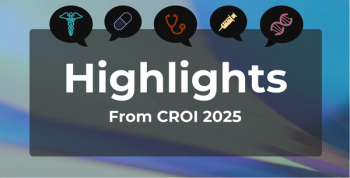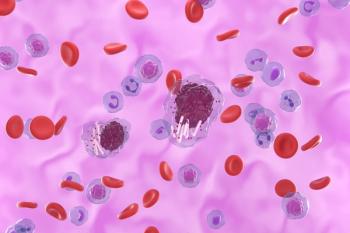
Hurdles Remain Despite Progress in Gene Therapy for DMD
Key Takeaways
- DMD gene therapy faces challenges in safety, efficacy, and long-term outcomes, despite FDA approval of delandistrogene moxeparvovec.
- Future strategies focus on novel AAV capsids, dual/triple vector systems, and genome editing technologies to improve outcomes.
Advancements in gene therapy for Duchenne muscular dystrophy (DMD) have improved the outlook for some patients, but further innovations in safety, efficacy, and treatment strategies are needed.
Despite progress in research and clinical experience, challenges remain in optimizing the safety, efficacy, and long-term outcomes of adeno-associated virus (AAV)
DMD is a rare, inherited disorder that leads to progressive muscle weakness and premature death. The disease is caused by mutations in the DMD gene, which is the largest known gene in humans and encodes the structural protein dystrophin.2 In patients with DMD, the mutated DMD gene does not produce virtually any functional dystrophin, leading to muscle degeneration.
“The disease has been of great interest in the genetics and medical fields as it represents a common inherited disorder, and the dystrophin gene displays one of the highest known rates of spontaneous new mutation,” the review authors explained.1 “DMD is inherited in an X-linked recessive pattern, which, combined with the high incidence and few treatment options, makes this condition an attractive but challenging candidate for genetic therapies.”
In 2024, the FDA approved the first AAV-based gene therapy for DMD, delandistrogene moxeparvovec (Elevidys; Sarepta Therapeutics), in patients aged 4 to 5 years, with the approval subsequently expanded to include patients 4 years and older.3 Delandistrogene moxeparvovec delivers a synthetic micro-dystrophin (μDys) transgene and has shown evidence of slowed disease progression.1 However, the review noted that clinical benefits have been modest and that clinical trials by other gene therapy developers have faced significant hurdles, including immune-mediated adverse events and early patient deaths.
“The overall results of these various trials can best be described as mixed, with modest clinical benefit, although long-term outcomes remain unclear,” the authors wrote. “None have resulted in a clear increase in strength, yet there often appears to be a slowing of disease progression.”
Several trials reported adverse events such as thrombotic microangiopathy and transient liver enzyme elevations. The authors noted that Pfizer discontinued development of its AAV9-based product following a fatal immune response and inconsistent efficacy outcomes.
“Together, the ongoing studies of AAV-μDys therapy suggest that the current approaches are having a modest impact on patient outcomes, but they also identify several issues that can be addressed to improve efficacy,” the authors wrote. “At the same time, it is important to note that DMD is slowly progressive, and μDys-mediated improvements in muscle function may manifest further and increase over time.”
Future Directions of Gene Therapy in DMD
Efforts to improve outcomes are now focusing on novel AAV capsids engineered for higher micro-dystrophin expression at lower doses. Next-generation vectors could allow for lower dosing, which may mitigate toxicity risks such as liver inflammation and platelet abnormalities,
In addition to optimizing vectors used for gene therapy, researchers are exploring dual and triple AAV vector systems to deliver larger constructs, including full-length and “midi” forms of dystrophin. These strategies rely on molecular mechanisms like RNA trans-ligation and protein trans-splicing to reconstruct the full protein post delivery, the authors explained. These approaches have shown promise in animal models but are still in early stages, with limited success reported in human tissues.
The review also highlighted the potential of genome editing as a longer-term solution. Technologies such as CRISPR-Cas9, base editing, and prime editing have the potential to restore endogenous dystrophin expression by directly correcting mutations. However, these strategies face delivery and immunogenicity challenges—particularly in targeting muscle stem cells, which are essential for sustained regeneration.
Importantly, the authors noted that current methods lack consistent cardiac muscle targeting, which is an unmet need given the high risk of cardiomyopathy in DMD. “Cardiac muscle expression is a critical consideration, as it has been shown that restoration of dystrophin in skeletal muscles but not cardiac muscle will exacerbate cardiomyopathy, sometimes with serious consequences,” they wrote.
While significant progress has been made, innovations in vector design, immune modulation, and delivery strategies are needed to further improve gene therapy for DMD, the authors noted.
“The field has advanced from trying to understand the structure and function of dystrophin, exploring possible gene delivery systems, and attempting to overcome immunological barriers that have slowed nearly all attempts at human gene therapy,” they wrote.
As new vectors are being developed, it is also key to continue using treatment approaches that involve the small molecules, oligonucleotides, and nondystrophin approaches that are already part of the DMD treatment landscape, according to the authors.
“The recent FDA approval for the first gene therapy of [a muscular dystrophy] was an enormous step forward, but it is only the beginning, as far more effective therapies are needed,” the authors concluded. “Whether these will come from improved or novel vectors, larger transgenes, gene editing methods, or approaches not yet imagined remains unclear. However, progress is coming rapidly, and it is only a matter of time, and critically, continued research support, before the field can feel comfortable with the current state of progress.”
References
1. Bengtsson NE, Tasfaout H, Chamberlain JS. The road toward AAV-mediated gene therapy of Duchenne muscular dystrophy. Mol Ther. Published online May 7, 2025. doi:10.1016/j.ymthe.2025.03.065
2. Duchenne muscular dystrophy (DMD). Muscular Dystrophy Association. Accessed May 29, 2025.
3. Shaw M. FDA grants 2 approvals to delandistrogene moxeparvovec for DMD. AJMC. June 20, 2024. Accessed May 29, 2025.
Newsletter
Stay ahead of policy, cost, and value—subscribe to AJMC for expert insights at the intersection of clinical care and health economics.









































